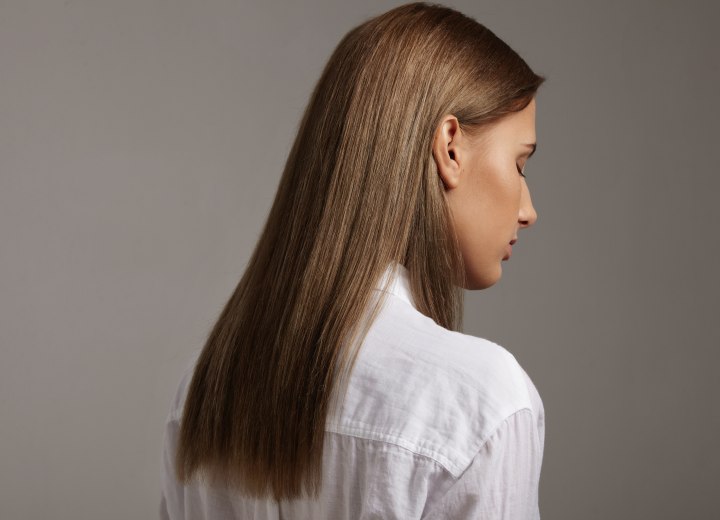Long Hair Straightening

A: You're definitely onto something with your theory about hair length and straightness. The weight of longer hair does indeed create natural tension that can help straighten wavy or slightly curly hair patterns. This is especially true once your hair grows well past your shoulders. Many people notice that hair that was quite wavy at shoulder length becomes noticeably straighter as it grows longer, simply due to the weight pulling it downward.
If your hair is mostly straight already, you could definitely get away with using your flat iron less frequently or only on certain sections. For longer hair, you might only need to straighten the last half or third of the length rather than going from root to tip every time. This approach significantly reduces heat exposure and potential damage.
The quality of your styling tools and your hair preparation routine are just as important as length when it comes to maintaining hair health. Invest in a high-quality flat iron with adjustable temperature settings and ceramic, tourmaline, or titanium plates that distribute heat evenly. Most people don't need the highest heat setting. Experiment with lower temperatures that still get the job done.
Pre-styling preparation is absolutely crucial for minimizing damage. Always make sure your hair is completely dry before using a flat iron, as applying heat to damp hair can literally boil the water inside your hair shaft and cause severe breakage.
When blow-drying, use medium or low heat rather than the highest setting, and always direct the airflow downward in the direction your hair grows – from roots toward ends. This helps seal the cuticle layer of your hair, reducing frizz and creating a smoother foundation before you even reach for your flat iron.
Using a natural boar bristle brush or a vented round brush while drying can make a tremendous difference. Hold sections taut as you dry them to pre-straighten your hair during this step.
After your hair is fully dry, you can assess whether you need the flat iron at all, or perhaps just need to touch up certain areas like the ends or face-framing pieces. Many people find that with a proper blow-dry technique, they can reduce flat ironing to once or twice a week rather than daily.
©Hairfinder.com
See also:
How to use a flat iron
How to blow dry hair straight
Is long hair less prone to getting oily?